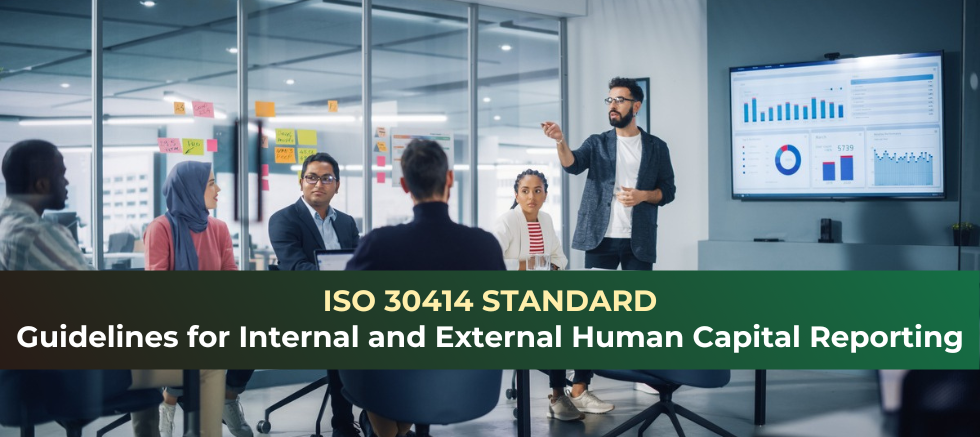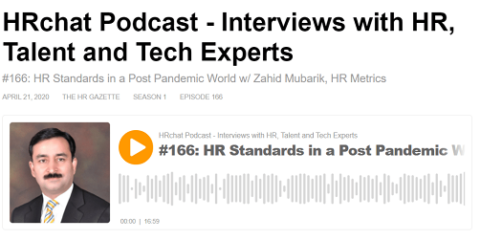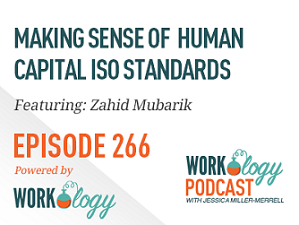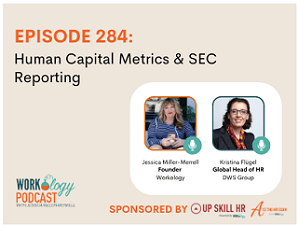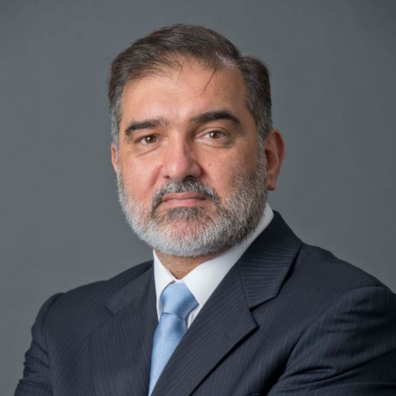Why Human Capital Data Analytics?
Global economy is transforming from physical to intellectual capital. According to Ocean Tomo Intellectual Capital Equity USA. In 500 Fortune Companies, 90% of value creation in S&P 500 firms is attributed to intangible assets. Human capital cost consumes lion’s share of intangible assets. With the rising investment in workforce, shareholders are keen to know as how this investment impacts the organization bottom line. There is a swell of interest by investors in human capital measurement and impact on the sustainability of organization.

With the emergence of Environmental, Social, and Governance (ESG) framework, human capital has become important for investment analysis, both from social and financial impact perspective. Human capital is now a key consideration for most companies around the world.
It is recognized as one of the most important drivers of competitiveness, value creation, and sustainable competitive advantage. Worldwide investors are engaging with companies to improve the workforce risk disclosure to cope with rapid environmental and technological change. CEOs are under growing pressure from investors, government, regulators, customers, employees, and communities, to become more transparent in their investments and outcomes.
To rethink sustainability of this planet, tectonic ESG focused developments are taking place around the world
- The European Union is issuing Corporate Sustainability Directive.
- The International Organization of Securities Commissions (IOSCO) has set out its intention to accelerate the harmonization of sustainability standards.
- The US Securities and Exchange Commission (SEC)has amended its rules to enhance human capital disclosures.
- The International Financial Reporting Standards (IFRS) Foundation has agreed to consult on broadening its mandate to include sustainability issues.
- The International Federation of Accountants (IFAC) has called for the creation of an International Sustainability Standards Board to sit alongside the International Accounting Standards Board (IASB) under the auspices of the IFRS Foundation.
- Leading voluntary framework and standard setters including Climate Disclosure Project (CDP), the Climate Disclosure Standards Board (CDSB), the Global Reporting Initiative (GRI), the International Integrated Reporting Council (IIRC) and the Sustainability Accounting Standards Board (SASB) have for the first time committed to work towards a joint vision.
- These developments form the natural building blocks of a single, coherent, global ESG reporting system for sustainability of corporate value creation system.
Human Capital Disclosure Standard
ISO has developed a global standard ISO-30414: Guidelines for Internal and External Human Capital Reporting. Using people analytics standard supports organizations seeking to adopt a more data-driven decision-making process as opposed to decisions based on gut feelings. However, before organizations can take this step and start with advanced People Analytics, there is a need to build a strong data foundation and overall metrics landscape. This is where the ISO 30414 Standard comes into play. Human Capital Reporting Standard provides qualitative and quantitative information on the workforce and HR practices. The goal is to make value contribution of human resources to the organization more transparent and outcome focused. The standard can also be used as a tool to demonstrate an organization’s social responsibility to internal and external stakeholders. ISO 30414 has 58 metrics in 11 areas of human capital management however, the applicability of metrics depends upon the size of the organization.

6 Key Reason for Using Human Capital Disclosure
1
Organizations have a fiduciary duty to communicate existing and potential future risks deemed material to their business. Human Capital is clearly material to virtually any organization’s current and future success, therefore a fiduciary responsibility exists to provide greater information to shareholders, creditors and others.
2
There is broad agreement by investors, board directors, CEOs, CFOs, governments, human resources and workers. That human capital has an impact on organizational success. CEO’s state “Our people are our most valuable asset,” or “It all starts with people.” Shouldn’t such asset information be disclosed to key stakeholders.
3
Companies need smart, effective employees to compete, so understanding and quantifying human capital is critical for success and future growth internally within the organization.
4
The current disclosure gap obscures talent management effectiveness and material human capital risks to investors. With no visibility into utilization of a firm’s single largest expense, investors must rely on social media tidbits or simply make judgements on no information at all.
5
What gets measured gets managed? For most organizations, human capital is not well measured except as a cost. This suggests unbalanced reporting with only the cost side of the equation represented and the value-add investment side missing.
6
Regulatory securities commissions, require extensive disclosure of all major assets including financial assets, physical assets, and technological assets such as patents. However, there is minimal disclosure of human capital, which is, for most organizations, their largest annual operating expense.
Benefits to Organizations
ISO 30414 provides the first and most widely accepted roadmaps for voluntary, strategic and systematic processes that improve outcomes and experiences. The primary focus of the human capital disclosure is to determine the long-term health of a business, thus mitigating the risk for the shareholders as well as all stakeholders including donors, regulators, employees, compliance agencies, customer, public and the community.
Human capital transparent disclosure attracts the attention of leading investors and executives interested in sustainable financial performance.
Improvement of HR management processes support good practices in establishing and maintaining positive employment relations.
Usage of standardized and agreed upon data describes organizational value in a broadly comparable sense.
By connecting the dots between the organization’s brand, culture, and objectives, with the practices used to engage all stakeholders, leaders can not only improve performance through efficiencies but create better experiences for all stakeholders.
With the new focus on human capital as an asset, the funds organizations budget to engage people are increasingly becoming considered an investment with a desired ROI, creating a new demand for voluntary, sensible and auditable practices.
It disrupts the way companies think, value and report on their human capital, and deliver what investors look for; sustainable growth and returns. It will enable financial investors to credibly assess the quality of HR mechanisms and processes between competing companies, include this information in respective financial evaluation models, and measure its impact on organization’s bottom line.
Benefits for HR Consultants/Assessors/ Practitioners
1. Identify measurement opportunities; diagnose HR financial and operational measures, understand the messages in measured data, with a view to become competitive, cost effective and yet responsive to business needs.
2. Quantify HR department’s contribution to the overall bottom line, through solid, factual, and verifiable data and analyze toughest workforce decisions with easy-to-use mathematical formulas.
3. Integrate measurement analytics with action plan through bench-marking, to achieve and surpass industry standards.
4. Accessible and transparent human capital data insights enhances internal and external understanding and assessment of investment in organization’s human capital, its present and future performance along with financial and non-financial returns.
5. Stakeholders view intangibles alongside tangibles data to review companies' performance. As a result, assessing whether a company is set up for sustainable growth becomes much more valid. This disruption also provides a massive opportunity for HR professionals as they understand HR practices, and how HR systems captures data to support organization’s value creation cycle.
Our Services
Diagnostic Audit
Organizational Development
Professional certification
ISO 30414 Certified Alumni Growth Rate
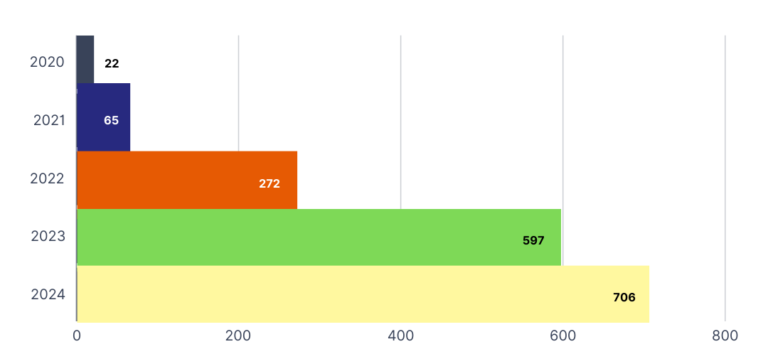
Certified HR Consultants/Assessors/ Practitioners ISO 30414
About Training
- Training: Online via Zoom and YouTube recorded sessions
- Duration: Total 16 hours, 8 sessions of 2 hours each
Learning Pack
- Soft Copy of ISO 30414: 2018 (HR Metrics will purchase and provide)
- Soft copy of Training Manual
- Problem-based metrics exercises
ISO 30414 Certification has 2 versions as under:
- Certified Practitioner ISO 30414
- HR Consultants/Assessors/ Practitioners ISO 30414
Exam Structure
- Learning contents/duration of both programs is same however difference lies in exam scope.
- Certified Practitioner ISO 30414 Program contains metrics proficiency test (online).
- HR Consultants/Assessors/ Practitioners ISO 30414 Program contains proficiency test, audit proposal, mock audit report and judgement test.
- HR Consultants/Assessors/ Practitioners ISO 30414 Exam Structure is as under:
- Proficiency test: 30%
- Case study-based audit proposal and audit report: 40%
- Judgment test: 30%
- Pass marks for both certifications’ exams are 60%. Those not willing/not able to pass the exam get “Certificate of Participation”.
Training Fee
- Coaching Fee: US $ 2000
- Regular Fee : US $ 1200
CEO HR Metrics

Zahid Mubarik
Zahid Mubarik SHRM-SCP, SPHRi, GPHR CEO HR Metrics President SHRM Forum Pakistan Member ISO HR Standards Technical Committee 260 Member Pakistan Stock Exchange Task Force on ESG
Zahid Mubarik is an internationally acclaimed visionary thinker, writer, speaker, thought leader and influencer on human capital development, analytics, diversity and inclusion. He is the founding member of ISO Geneva Technical Committee 260 for developing HR global Standards. He actively took part in ISO face to face meetings for global HR Standards development at American National Standards Institute (Washington DC), British Standards Institute (London), Standards Australia (Melbourne), The Royal Netherlands Standardization Institute (Rotterdam), Association Française de Normalisation (Paris), Singapore Standards Council (Singapore), The National Standardization Agency of Indonesia (Bali) and UNI-Ente Nazionale Italiano di Unificazione (Milan). Zahid has the honor of being distinguished speaker in international conferences and seminars on human capital analytics at Las Vegas, Beijing, Moscow, Baku, Hanoi, Dubai, Abu Dhabi, and Tokyo. His analytical papers and expert talks have been featured by national/international media including Microfinance Gateway World Bank Washington, CNBC, Dawn, Business Recorder, Business Plus TV and Gulf Economist.
Zahid served as Global Chair of ISO Working Group on HR Metrics Standards. During his leadership, ISO published two global HR standards including ISO 30410: Impact of Hire and ISO 30411: Quality of Hire. He also served as member of Working Group developing ISO 30414: Guidelines for Internal and External Human Capital Reporting. He groomed and facilitated certification of 500+ consultants/practitioners worldwide with a heavy concentration in Tokyo Japan. Zahid is SHRM USA Partner in Pakistan. SHRM is world largest HR association having 325,000+ members in 165 countries. He introduced SHRM competency based global HR certifications in Pakistan and developed more than 200 people. He served as Board Director The Centre for Global Inclusion USA. He introduced Global Diversity, Equity & Inclusion Benchmarks Standards in Pakistan and facilitated 65 large multinational and national corporations in implementing Global DEI Benchmarks Standards. Zahid is a member of Pakistan Stock Exchange and Pakistan Institute of Corporate Governance Task Force on ESG Disclosure. He has a knack in using human capital analytics to transform organization on (S-Social) part of ESG. He is the Chief Editor of HR Magazine Workforce Tomorrow.
Survey Insights: Human Capital Analytics Maturity
Lead Consultants/Assessors 30414
Our Amazing Team of Consultants
Our Amazing Team of Consultants

4C GROUP AG
4C GROUP provides consulting expertise for you to effectively concentrate on the link between strategy and execution, combining vital elements that belong together: strategy; and its implementation and enforcement in selected corporate functions.
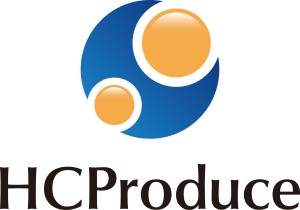
HC Produce Inc.
HC Produce Inc. is a human capital service company based in Tokyo, Japan. It supports client’s human capital management including succession planning, leadership development, and introduction of ISO 30414. It provides individual and organizational certification for ISO 30414 in partnership with HC Metrics.
FAQ’s
A Standard is a document that provides requirements, specifications and guidelines or characteristics that can be used consistently to ensure that materials, products, processes and services are fit for their purpose.
ISO is a legal association of members of national standards bodies of 162 countries, supported by a Central Secretariat based in Geneva, Switzerland
Previously, ISO standards were only developed for the manufacturing sector. Currently, the service industry accounts for more than 70% of the global economy. The ISO human resources standards provide human resources practitioners with broad, coordinating guidance and harmonize disparate practices for the benefit of organizations and their employees.
SO 30414, Human resource management – Guidelines for internal and external human capital reporting, is the first International Standard that allows an organization to get a clear view of the actual contribution of its human capital.
You can get training online via Zoom and/or YouTube recorded sessions
Yes. The standard is designed to be implemented by organizations of different sizes and structures.
Total 16 hours online training that includes; 14 hours Training on 58 metrics of ISO 30414 and 2 hours Training on conformity assessment process ISO 30414.
- sessions (2 hours each)
Both programs include problem-based exercises to measure/analyze human capital issues. Learning contents/duration of both programs is same however difference lies in exam scope.
Pass marks for both certifications exams are 70%. Those not willing/not able to pass the exam get only certificate of participation.
HR Metrics is recognized by SHRM to offer SHRM-CP or SHRM-SCP professional development credits (PDCs). This program is valid for 16 PDCs.

